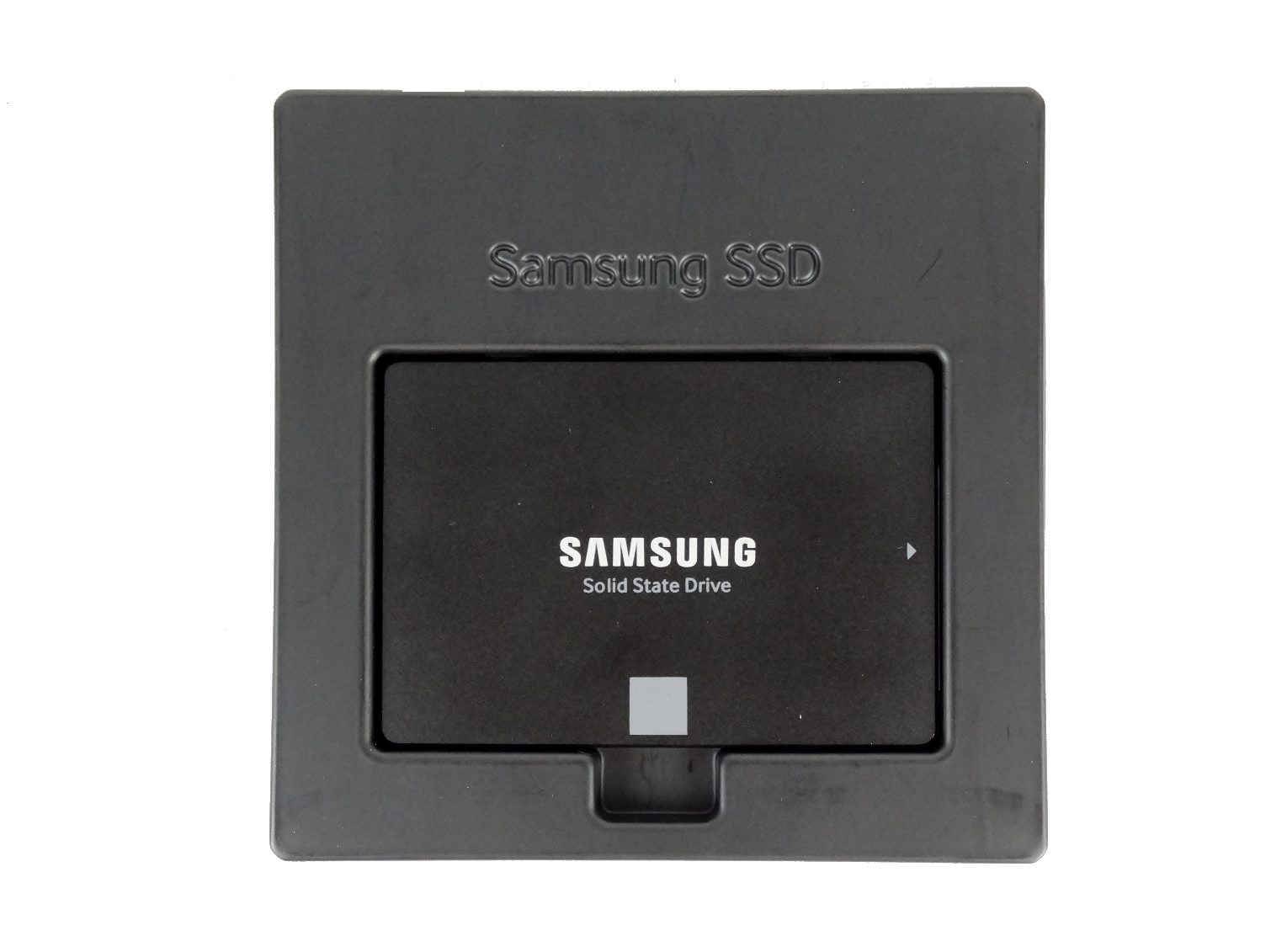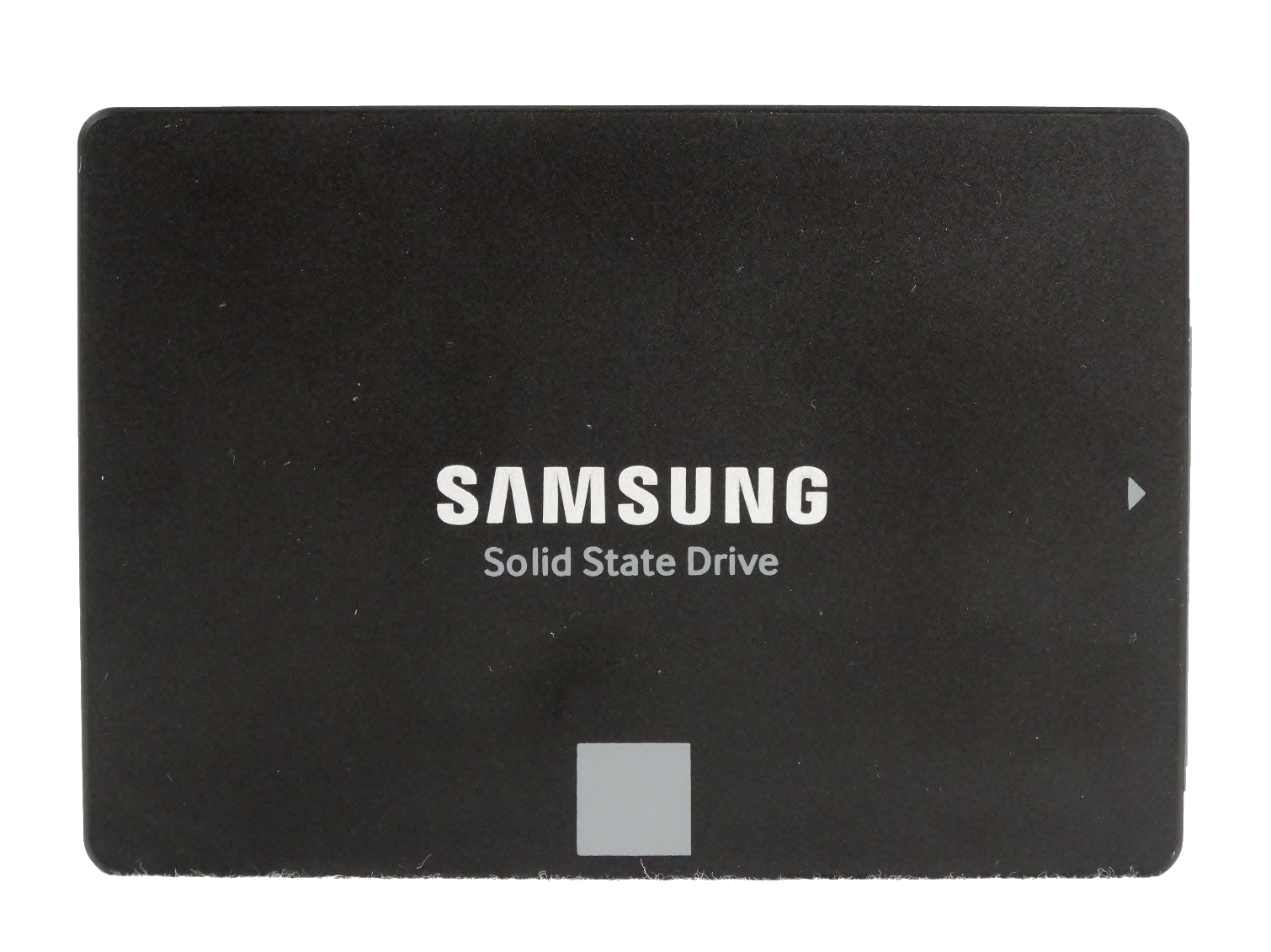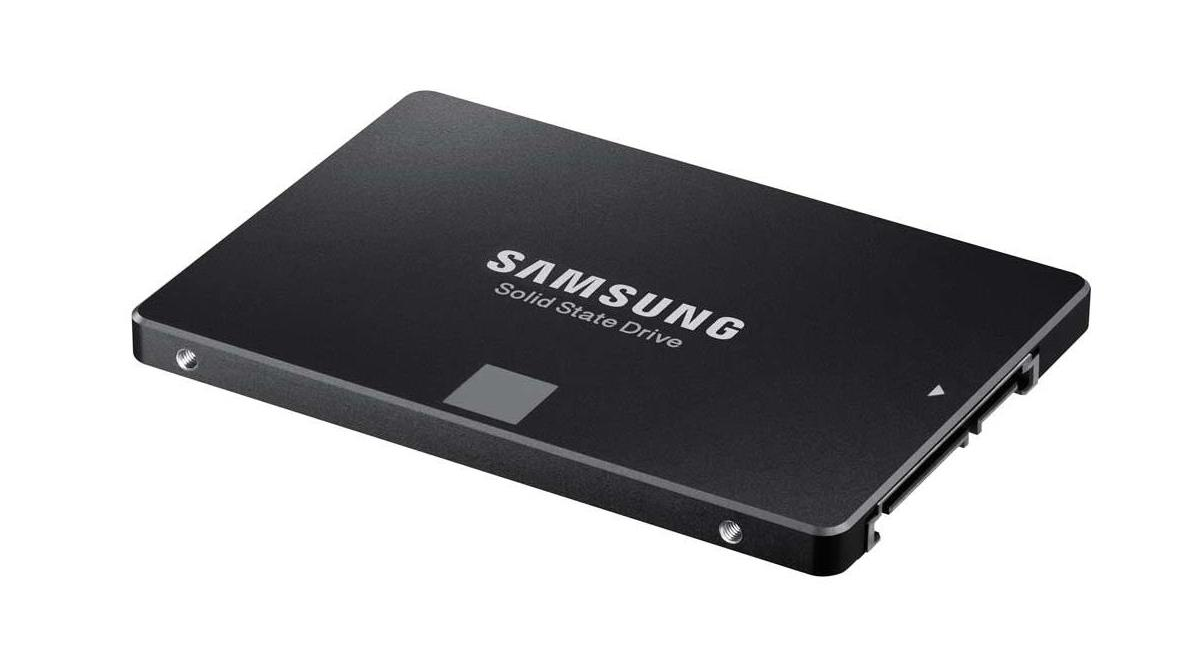Early Verdict
The Samsung 850 EVO 4TB is the best consumer SSD on the market. The drive delivers an amazing amount of performance that we haven't seen since the SanDisk Extreme Pro. Samsung needed a large amount of spare area to reclaim the performance lead, and the SSD currently sells for $1,500, so it's not for everyone. We hope to see these selling for $1,200 on or around Black Friday.
Pros
- +
The largest consumer SSD
- +
The fastest consumer SSD
- +
Massive spare and SLC area
- +
The best SATA SSD
Cons
- -
Pricing
- -
Low warrantied endurance rating
Why you can trust Tom's Hardware
Specifications, Pricing, Warranty And Accessories
The Samsung 850 EVO series first hit the market in 2014, and we've already had one update to increase density to 2TB. Samsung doubles the previous consumer SSD capacity king with a new 4TB model that utilizes the latest V-NAND technology. The combination of 4 TB of storage, 98,000/90,000 read/write IOPS and 540/530 MB/s of throughput may make this the best SATA SSD on the market.
The Samsung 850 EVO is the best selling SSD series of all time and it proved that three-bit per cell (TLC) flash memory could successfully compete with MLC in the mainstream market. Samsung's TLC V-NAND memory is superior to MLC from other NAND flash manufacturers in both performance and endurance. The company has made steady updates to increase density since its initial release, which increases the amount of data the SSD can hold per square inch. Increasing the density lowers manufacturing costs and enables larger SSDs to come to market at better price points.
Samsung utilizes its new 3rd-generation 3D V-NAND technology to reach 4TB. Samsung's new 48-layer V-NAND doubles capacity by packing 256Gbit into a single die, and the company stacks on raw capacity from there. The 4TB's configuration is nearly identical to the 850 EVO 2TB model that has 8 NAND packages with 16 die apiece. In the image, we see that 48-layer V-NAND is physically larger than 32-layer NAND.
We would love to have the new 4TB 850 EVO replace the 2TB model at the $699 price point (the 850 EVO 2TB's current MSRP is $799), but that is not possible. Samsung will recoup some research and development costs with this product, but it still manages to keep pricing at EVO levels (36 cents per gigabyte).
The Samsung 850 EVO 4TB is not the first or only SSD to ship in this capacity. Other companies have reached this capacity already, such as SanDisk’s Optimus Max (4TB $2643). Those products were geared for enterprise workloads and deemed too expensive for client use. In contrast, the Samsung 850 EVO is the first 4TB consumer-class product to enter the market, and it fulfills the promise of vertically stacked NAND through its increased capacity and high-performance.
Technical Specifications
Samsung initially released the 850 EVO in four capacities that ranged from 120GB to 1TB, and we learned later that the company considered a 2TB model, but passed it over at launch due to cost and market concerns. Samsung didn't predict enough sales at 2014 prices to make the 2TB product viable. After a year, and several price reductions for the entire 850 EVO product line, the 2TB came to market with only a small premium over the 1TB 850 EVO's original MSRP.
Many of the 850 EVO products have changed since their first introduction. The larger SSDs moved from 2nd-generation to 3rd-generation V-NAND. The new firmware on the 3rd-generation V-NAND models increased performance slightly, but not enough for end users to spot the difference.
Get Tom's Hardware's best news and in-depth reviews, straight to your inbox.
SSDs reach high speeds by reading and writing to more than one die simultaneously, so every SSD is like a mini RAID array with data spread across the packages. The increased 48-layer density means that only half the number of NAND die are needed to reach each capacity point, which can hurt performance. Samsung only updated products with enough interleaving to retain or increase performance, so the company didn't change the smaller capacity 850 EVO SSDs.
The Samsung 850 EVO 4TB features the same performance ratings of the other high capacity products. Samsung reports the 850 EVO 4TB delivers 540 MB/s sequential read and 520 MB/s sequential write speeds, and up to 98,000 random read and 90,000 random write IOPS. Samsung is one of the few companies that specs queue depth 1 random performance (as noted in the table). On paper, the new 4TB delivers the same performance as the previous high capacity drives, although we found slightly higher performance in our synthetic testing.
Other features carry over as well. The 850 EVO series still supports data encryption through TCG Opal and Microsoft's eDrive, and TurboWrite is back and bigger than ever. The 4TB model features a massive 96GiB spare area, and the SSD uses half of that to write data quickly to NAND programmed as SLC space, which boosts performance. 48GB is enough to transfer an entire Blu-Ray ISO directly to the SLC buffer.
Overprovisioning (OP), which is a spare area left in reserve, is a topic we often gloss over. We don't miss 8GB held in reserve on a 128GB SSD. The Samsung 850 EVO 4TB reserves a massive 96GiB for internal operations like wear leveling and garbage collection. The spare area is a significant block of capacity for internal use, and although it is a lower OP percentage compared to the small models, the massive spare area makes the SSD fast. The raw amount of spare area is more than any other consumer SSD we've tested to date, but the 4TB 850 EVO is also unlike any other.
Samsung usually releases new capacities in pairs, with one new capacity point for the 850 EVO and another for the 850 Pro. You will notice this is not a dual-product review like our 850 2TB Update article. We don't have any insight into an 850 Pro 4TB coming to market, but given the performance of the 850 EVO 4TB, we don't think Samsung needs one.
Samsung moved the 1TB and 2TB SSDs from 32-layer to 48-layer NAND, which gives us a chance to compare power specifications on an equal playing field. The only SSD we were able to find with accurate power measurements for both types of NAND was the 1TB. We list the DEVSLP power of 32-layer NAND at 4 mW in the table, but that drops to just 2 mW with newer 48-layer 256Gbit flash. The power consumption decreases on the current 48-layer models, but the performance doesn't change.
Pricing, Warranty, And Accessories
Before our NDA lift, we found the Samsung 850 EVO 4TB listed for sale online at $1,499. Over the weekend Amazon and Newegg both listed the EVO 4TB at the same $1,499 price point.
The 850 EVO 4TB shares the same 5-year warranty as the other products in the series, but it is also limited by the same 300 terabytes written (TBW) endurance rating as the 2TB and 1TB models, which will cause quite a stir with some of our readers. Samsung uses the TBW rating, which is a measurement of how much data the SSD can absorb, for warranty purposes. Independent tests show that Samsung's V-NAND survives well beyond the TBW warranty period, but very few studies have used the strict JEDEC guidelines to make such claims, and there is more to endurance ratings than how much data you can write to the flash.
As a retail product, the Samsung 850 EVO allows users to utilize the Magician SSD toolbox software. This series also enables Rapid Mode, a DRAM cache algorithm that decreases the small block size writes to the drive by turning random data into large sequential chunks. This technique increases the performance and endurance of the drive. Samsung ships each EVO SSD with software that also includes data migration software. Users can also download it from Samsung's web page.
A Closer Look




Outside of the 4TB sticker and minor updates to the package text, the 850 EVO packaging remains unchanged from the previous releases. The drive ships secured in a plastic form-fitted container with the software disk and paper manuals tucked underneath.




There is nothing new to see on the outside of the drive if you are familiar with the 850 EVO series. All six capacities look identical. The sticker on the back of the drive changes to let users know the capacity and PSID code. Samsung also offers the 850 EVO products in M.2 and mSATA form factors, but as of yet, only the 2.5-inch model gets the high-capacity treatment.
The Tear Down





The 850 EVO 4TB uses the same MHX controller that Samsung first introduced in the 2TB model. Samsung's modular controller design allowed the company to change the memory controller inside the flash processor to increase the DRAM memory buffer size. The 850 EVO 4TB addresses 4GB of LPDDR3 1600 MHz memory on a single package to cache the LBA table data (a map of where the data is on the drive).
Samsung packed 16 NAND die into each 512GB package, and there are eight packages spread across both sides of the 3/4 size printed circuit board. Samsung manufactures all of the major components, which gives the company direct access to the supply line.
MORE: Best SSDs
MORE: How We Test HDDs And SSDs
MORE: All Storage Content
Current page: Specifications, Pricing, Warranty And Accessories
Next Page Four-Corner Performance Testing
Chris Ramseyer was a senior contributing editor for Tom's Hardware. He tested and reviewed consumer storage.
-
lucas_7_94 And i'm here with the 250GB...Reply
In term's on technology, this is amazing, small, fast, good storage, hope the prices will be a little cheap!! -
Faisal_Almalki223 Great technological evolution for SSDs! In a really short time too...Reply
But the only culprit is the price, but overtime it might drop down to a logical price that appeals to us end users. -
logainofhades At that price, they can keep it. I will just sit here with my 480gb Sandisk Ultra II and Toshiba 4tb HDD, for now.Reply -
teamninja For regular people a 250 gb SSD will work perfectly well and a HDD for storing photos and videos will do fine.... considering a 4 TB HDD cost 1/10th of this...Reply -
phantomferrari Personally if I had the money to spend I would wait. Since the SM961 was released based on a new controller and now micron/intel and others are starting to push out 3d nand products id wait until the 860 series (which should be out by the end of the year) a new controller and more competition (which samsung really doesnt have now when it comes to 3d nand) should make for cheaper drives :)Reply -
Metteec Nice review. Glad the low TBW was pointed out. Samsung would sell a few more if they increased it to 1,200TB, the same ratio TBW to size as their smaller 850 EVO drives. The future is grand for SSD storage; would not want to be a disk-based storage company right now.Reply -
Walter_IT "This jump isn't a shot across the bow to hard disk drive manufacturers; it's a boot on the throat".Reply
I disagree.
In fact, I am having a hard time thinking which kind of consumer could make use of such SSD, at these prices.
I just so happened to be looking for a 4-bay NAS for home storage, and for ~$1600 I can get 24TB in Raid5 configuration. All inclusive, and with a fairly decent NAS (Qnap TS451).
A 6TB consumer HDD sells for $160. So we're talking about nearly 10X lower cost for 50% more capacity. Yes, of course, the HDD is massively slower, but HDD are still way faster than anyone needs, for streaming videos. Which if you need 4~6TB, and you are a consumer, it is probably what you need the disk for.
So the advantages of this drives boil down to:
a) Single disk setup
b) Large storage on a laptop
Point a) is “convenient”, at best, but would anyone pay ~$1200 for such convenience? (With $300 you can get a 500GB SSD + 6TB HDD).
Point b) may make a difference … however, seeing how the few laptops that ship with SSD have options for 128GB or 256GB, the 4GB is really wishful thinking. And, again, this carries more than $1K premium. Not for everyone, that’s for sure.
IMHO, this is great technological advance, that goes in the right direction, but I see no practical use, and very little market, for it. Again, IMHO. -
CRamseyer The statement was made looking at the long term. Samsung could sell this drive today for $700 if it wanted. It uses the same controller and die arrangement as the 2TB drive. The additional 2GB of DRAM is a rounding error for most.Reply
Think of it as a proof of concept for many people right now at a $1500 price point. What happens when Samsung moves to 60-layer TLC flash with 384Gbit density (estimated)? The $700 moves down to $400.
If you don't think HDD companies are scared of flash then why are they buying IP and assets as fast as possible?




